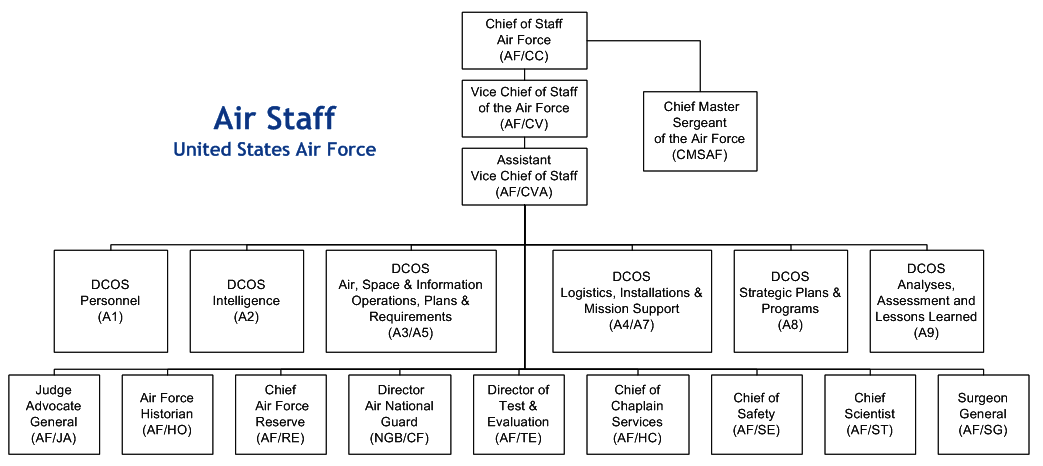Knowing who to talk to is about knowing who does what...
In the final installment in of my three part article series providing a more in depth look at the Innovation acquisition system, let us now turn to the most mysterious and hard to answer question for outsiders of “who do I talk to?” To answer this question it is first key to understand the organizations involved and their primary function either in or related to acquisition. The title graphic above shows the layout of major organizations that have required roles in this overall process. The ever elusive needs, requirements, and funding decisions are all made at the Combatant Command (COCOM) and Major Command (MAJCOM) level. The outcomes of those decisions are then acted upon for R&D or Acquisition by internal or external organizations depending on the size of the effort, with large efforts going external and small ones staying internal to the commands. Every command staff serving both COCOMs and MAJCOMs have statutory functions they must provide, and therefore have similar but varying structures and even these change over time. Understanding these structures is the key to figuring out who to talk to for any major decision in the acquisition process.
Let us start by comparing the Joint Chief’s of Staff organizational structure to that of the Air Staff for the Air Force, and an Air Force MAJCOM command staff like Air Force Material Command (AFMC).
You will notice the existence of certain core functions at every level: Personnel-1, Intelligence-2, Operations-3, Logistics-4, Requirements-5, Communications-6, and Plans & Programs-8. In addition you will also note that various command levels combine certain functions into combined directorates, most common combinations are: 2/6, 3/5, 4/7, 5/8, 5/8/9 (with other services like the Army adding their own flavors like 3/5/7). The key points to understand are that as it applies to the directorates and their functions:
Requirements are “owned” (verified and validated) by the directorate responsible for that related functional area (Usually 2, 3, 4, or 6)
Requirements are processed generally by the 5 as part of the major acquisition paths
Acquisition actions are then handed off either externally to other organizations like LCMC or processed internally through the 8
So it is this constant interplay between the directorates within the command staff that help process the needed inputs and outputs to allow the overall process of the acquisition pathways to function. With all this information in mind, let us consider the primary question again of “who do I talk to?”
Usually the issue of “who” to talk to is really a vail of the core issue of not knowing who does what. With the description above you can reframe your understanding and divide up your questions in to a more process driven series. First, who can either match my innovation to a requirement or help me start/validate a new requirement for my innovation? This would be the command directorate within a MAJCOM that is responsible for the functional area of your innovation. Second, once I have matched my innovation to an existing requirement or validated the need to start a new requirement, who do I contact? If it is an existing requirement it’ll go through the 1067 process with the 5 to action, if it’s a new requirement that’s a longer process between the functional directorate and the 5 for action. Once you have either a fully modified requirement or new requirement completed with the functional directorate and the 5, it’ll get racked and stack for action with the applicable acquisition organization for execution within subsequent budgetary planning cycles.
Ok bonus points…how do you short cut what clearly seems like a long drawn out nightmare of a process? Well interestingly enough it all comes down to the concept of time. What I mean is, are you functionally trying to get a certain amount of widgets to a certain unit only once, or are you trying to sustain a large amount of multiple integrated parts and services over time to many units in many places? If you are doing the later, that’s a large acquisition action requiring the long process as outlined in my articles. However if you are trying to get a single order of something once to a warfighter down range based on an urgent or at least important need, I would argue that there are multiple ways of doing this. They all come down to using existing contract options (usually through or in coordination with the 8) to either purchase end products for direct delivery utilizing O&M funds from any high enough senior leader in the COCOM command staff who’s got it (usually directorate heads in the 2, 3, 4, 6, or 8). Alternatively, you could pull the old OEF/OIF move of utilizing RDT&E funding from a lab or MAJCOM to do an “Operational Test and Evaluation” (OT&E) of some technology in a particular theater location with applicable COCOM approval. Either way you end up with hardware downrange for use, the simple catch just being these are basically one time good deals. So the bottom line is weigh your options carefully and work the processes with the right players to get the job you want accomplished.



